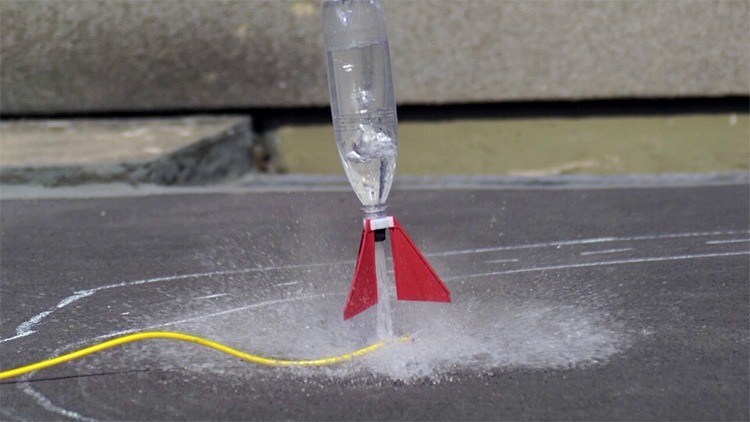Water rockets have long been a source of entertainment for both kids and adults. Launching them at backyards or open fields and sending them rushing to the sky is undoubtedly fun to watch. Yet, water rockets have also been valued for education. Aside from robots, they are a permanent and popular project at school fairs, teaching students about science concepts. Despite being made of simple plastic bottles, the way they work is pretty interesting, captivating people’s minds. So, how do they fly? What exactly is the science behind water rockets? Read on to discover.
The Science Behind Water Rockets
To fully understand water rockets, let’s first dive into Isaac Newton’s Three Laws of Motion and their correlation with the flight of water rockets.
First Law: Inertia
Newton’s first law states that any object at rest won’t move, or an object in motion will remain in constant motion and speed in a straight direction unless there is an unbalanced force that affects it. That implies that a rocket will stay still on the launch pad until a force acts on it that will hurl it upward.
Second Law: Force
The second law says that force is equivalent to mass times acceleration. When it comes to water rockets, the accelerant is the air pressure pumped inside the rocket, while the water acts as the mass or the propellant. Water is heavier than air. Thus, providing a better thrust. By altering the ratio of these two, you can get a different amount of force.
Third Law: Action and Reaction
Newton’s third law states that whenever a force is applied to another object, there will be an equal but opposite reaction on the first object. The law applies to water rockets as pulling the launching cord releases a downward force from the air and water through the nozzle. It then generates the opposite force, propelling the bottle upwards.
The Flight of Water Rockets
Now that, we’ve known the science behind it. Let’s thoroughly understand the flight of water rockets. First, it’s given that the rocket won’t propel without any force, like how a fallen leaf won’t move unless the wind blows. That is why we need to create force and energy, which are brought by the two components, air, and water, to make it fly.
In water rockets, a bottle is partly loaded with water and is sealed. It is then pumped with air using an air compressor or a bicycle pump. As the air goes in, air pressure builds up and creates the force needed to propel the rocket.
After the launching cord is pulled, the pressure pushes out the water onto the bottom of the bottle in a downward direction. The same force is seemingly mirrored but in the opposite direction, causing the water bottle to fly fast and high into the air. Depending on the amount of water and pressure store, a rocket’s flight may differ in speed and height. The highest altitude recorded for a water rocket is 830 meters or 2,723 feet, a feat achieved by the University of Cape Town in 2015.
If you’re curious why there are fins on the bottom of water rockets, Newton’s Law of Motion still applies. As the water rockets propel upwards, another force in the form of resistance or air drag acts on it. Like how fletchings allow the arrow to fly in a straight line, the fins on a water rocket catch or balance the force from the wind, prevent it from turning end over end while on air.
